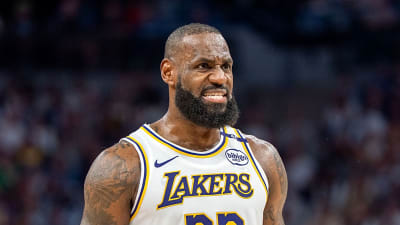
Asking a rookie to contribute early can be like asking a teenager to make a nice dinner for the family.
If they’ve been brought along in the correct way, it could turn out OK. Relying on that to be a staple of your family, however, could result in upset stomachs and a messy kitchen.
The Green Bay Packers are not relying on any specific rookie to become an impact contributor in 2025. They return 20 of their 22 starters from their 22-10 playoff loss against the Philadelphia Eagles. Their only significant departures from that January day are defensive tackle T.J. Slaton and center Josh Myers.
The Packers believe they upgraded the offensive line by moving on from Myers, signing Aaron Banks to play left guard and sliding Elgton Jenkins to center. Slaton’s loss could be felt in the middle of the defense, but they have invested a lot in that position to mitigate some of the issues that could arise.
That being said, last year’s team was not good enough to win a championship. Going 0-6 against the Detroit Lions, Minnesota Vikings and Philadelphia Eagles, the NFC’s three best teams by regular-season record, firmly suggested what looked to be true as the season progressed.
The 2024 Packers were good but not good enough.
The team’s big free-agent additions, Banks and cornerback Nate Hobbs, will help. So will improvement from within the roster. Getting a sizable contribution from their draft class could help push them over the top.
Here is a look at the team’s five most important rookies.
No. 1: WR Matthew Golden
You can probably still hear the roar of the crowd from when Mark Murphy announced in April that the Packers were drafting Matthew Golden in the first round.
Yes, he was the first receiver drafted in the first round by the Packers since Javon Walker in 2002. No, he’s not here just to break a streak that was mostly a media- and fan-related obsession.
If you looked at coach Matt LaFleur’s face when talking about Golden for the first time, you could almost feel a level of giddiness about adding him into their offense.
“You cannot teach 4.29,” LaFleur said with a wry smile when mentioning Golden’s 40-yard time.
It’s true, the Packers’ offense will be missing an element of speed in the early part of the 2025 season. While Christian Watson looked to be further along than anticipated during the team’s offseason program, he’s unlikely to play before Halloween.
Green Bay’s offense has struggled when it has not had speed on the field, and Golden provides that along with some positional versatility. He can play wide receiver but also kicked inside to the slot at Texas. The Packers have long valued that level of versatility with their receivers.
With last year’s top four receivers under contract and the additions of two receivers in the first three rounds of the draft, competition will be fierce for time on the field.
There is not a receiver on Green Bay’s roster who has earned a no-doubt opportunity to be a starter who has to stay on the field. Golden is the most talented receiver on the roster. If he knows the playbook, his ability to make plays will give him opportunities early and often.
If he is what the Packers think he is, he could elevate the team’s passing game, which finished last season with an exaggerated thud.
As great as the running game was last season, teams are more likely to fly to the Super Bowl than they are to drive. They need more out of their passing game, and Golden is one of the big keys to unlocking that potential.
No. 2: DE Barryn Sorrell
For all the discussion this offseason about Green Bay’s pass rush needing more punch, it did not add anyone of significance until the fourth round.
Barryn Sorrell was one of the best stories of the NFL Draft, but the reality is that he is a fourth-round pick. Relying on him to provide an instant impact could be asking a lot, but that’s the reality the Packers created.
Rashan Gary is coming off a disappointing season. Ditto for Lukas Van Ness. Kenny Clark had the worst season of his career. Brenton Cox and Arron Mosby are not established NFL players.
Sorrell could be asked to contribute a lot early in his career. At minimum, the opportunity is there for him to do so.
The Packers like to rotate their pass rushers to keep them fresh at the end of games. Sorrell will enter training camp in a battle with Kingsley Enagbare and Cox for those snaps behind Gary and Van Ness.
Regardless of injuries, the Packers need more out of their pass rush, and Sorrell represents the biggest investment this offseason. He’s incredibly important as a rookie.
No. 3: DT Warren Brinson
Remember how good Green Bay’s run defense was a season ago? That could prove to be a one-hit wonder after defensive tackle T.J. Slaton left for Cincinnati in free agency.
Slaton was the team’s only big man in the middle of their defense. The Packers did not show much urgency to sign him, nor to draft his replacement. Warren Brinson was the only interior defensive lineman the team drafted, and it waited until the sixth round to do it.
Brinson is an interesting personality, which should endear him to his teammates, but he might need to play.
Devonte Wyatt could be a breakout player, but he was drafted in the first round because of his pass-rush ability. Karl Brooks is undersized as a former edge player. Colby Wooden has played inside and outside with so-so results.
With no proven depth beyond Kenny Clark, Wyatt, Brooks and Wooden, the 315-pound Brinson has a chance to carve out a role for himself as a primary defender on run downs.
No. 4: OL Anthony Belton
At first glimpse, you might wonder how Anthony Belton even made it out of the first round. He stands an intimidating 6-foot-6 and 335 pounds.
“Big don’t get small,” Packers VP of Player Personnel Jon-Eric Sullivan said after the selection of Belton in the second round.
For now, Belton looks to be the team’s seventh offensive lineman. However, as anyone who has paid any attention to football can tell you, depth on the offensive line can dry up quickly.
The most egregious example of this came in 2016, when the Packers had to use defensive tackle Letroy Guion at guard at the end of the NFC Championship Game at Atlanta. A less exaggerated but equally painful example came in last year’s wild-card loss to the Eagles. Elgton Jenkins was injured in the first quarter. First-round pick Jordan Morgan, the team’s primary backup last season, was on injured reserve.
Without them, the gruesome twosome of Kadeem Telfort and Travis Glover were disasters against Philadelphia’s powerful defensive line.
Belton is more talented than Telfort and Glover. While he might not be a starter as a rookie, he will not be afforded the luxury of a redshirt season. He’ll likely get a chance to play significant snaps as a rookie. Sometimes, that’s toward the end of a blowout. Other times, it’s in the playoffs.
Whenever the time comes, Belton will have to be ready. Otherwise, like last year, Green Bay could be sent packing earlier than they’d like.
No. 5: WR Savion Williams
Is Savion Williams’ skill-set a luxury? Maybe. Is that luxury something that could be important? Absolutely.
Simply put, if Williams only becomes the team’s primary returner and gadget player on offense, that could be incredibly valuable because of who is not being asked to do those things.
Jayden Reed was the team’s primary gadget player and punt returner during his first two seasons. The wear and tear perhaps caused coach Matt LaFleur to use him sparingly at times on offense. Or, even worse, perhaps Reed was not able to fully develop as a receiver because of the focus he had to put in those things.
The same can be true for Keisean Nixon, the team’s kickoff returner the past three seasons who is expected to be a full-time cornerback this season.
A third-round pick, Williams could be a featured player on jet sweeps and screens on offense and the kickoff and punt return on special teams.
Williams was a demon as a runner at TCU, with the coaches using him as a wildcat quarterback to get the ball in the hands of their best playmaker.
He’s bigger than Reed and just as fast, which means he could handle more punishment without sacrificing the explosiveness that makes Reed so dangerous in his varied roles.
As he recovered from labrum surgery, Williams wasn’t able to do much during the team’s offseason program, but the hope is he’ll be full-go for training camp. If he is ready, the Packers could use him in a variety of ways as a rookie. That will help both him and two of their most important players on each side of the ball.
More must-reads:
- 2024 NFL breakout players who could be even better in 2025
- Chiefs WR Rashee Rice sentenced to 30 days in jail, five years probation
- The 'Total touchdown leaders by NFL season since 2000' quiz
Breaking News
Trending News
Customize Your Newsletter
 +
+
Get the latest news and rumors, customized to your favorite sports and teams. Emailed daily. Always free!








